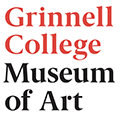-
Artworks

Louis Fratino
American, b. 1993
Andrea and Tommi in Pieve, 2019
Oil on canvas
20 x 30 in. (50.80 × 76.20 cm)© Louis Fratino, courtesy of Carl A. Niendorff
Image courtesy of Ciaccia Levi, Paris
Louis Fratino’s inspiration comes from ancient art via the modern, notably the cubist revision of Classical and Academic ideals by Pablo Picasso. Picasso prioritized the female body in his work, the complexity of which was compounded (and problematized) by his relationships with the women — his successive “muses” — who populate his art. Fratino gives us, also in the form of friends and lovers, the male body, the natural state of which was commonly depicted in ancient art, and remains a fundamental of life-drawing classes to this day. Male genitalia, however — euphemistically (en)titled “manhood” — is typically shrouded in today’s popular culture, as if in modesty, and left to the imagination.
Queer-identifying artists are exploding these customs, as well as misogynist conventions in which the female body is rendered available and commodifiable but the male’s is reserved, as if sacrosanct. Rejecting the oppressive circumscription of human sexuality and sexual practices more generally, Fratino celebrates the unbound male body and consensual sex itself as natural states of human affairs, the repression of which, and stigma attached to which, are far greater causes of social, mental, and spiritual disorder.
Sensibilities abound regarding nudity, sexuality, and propriety. But the truth remains, we are made this way. Everything else is imposed.
© Louis Fratino, image courtesy of Ciaccia Levi, Paris


